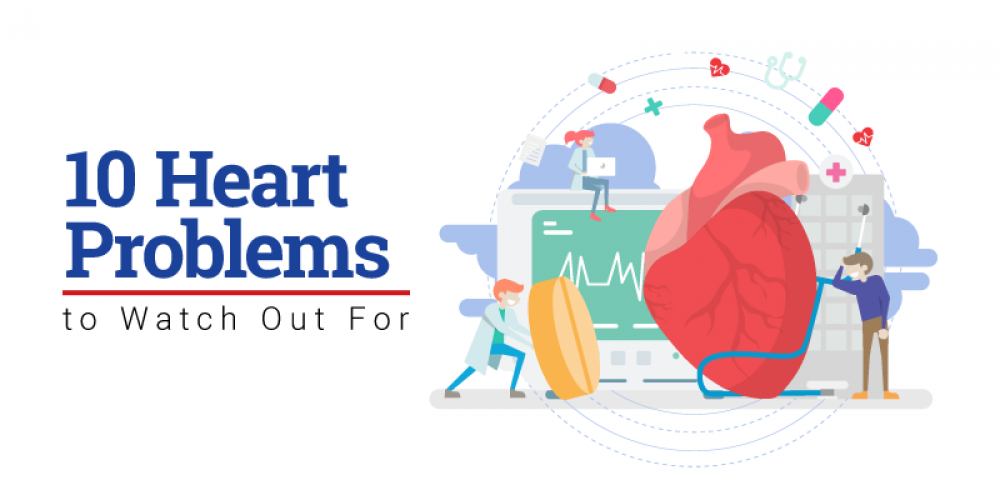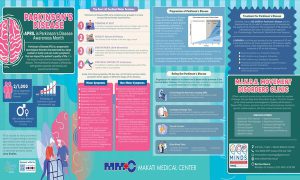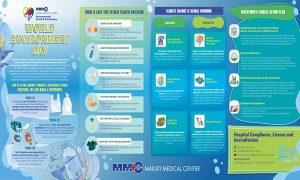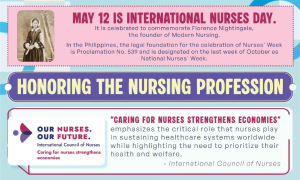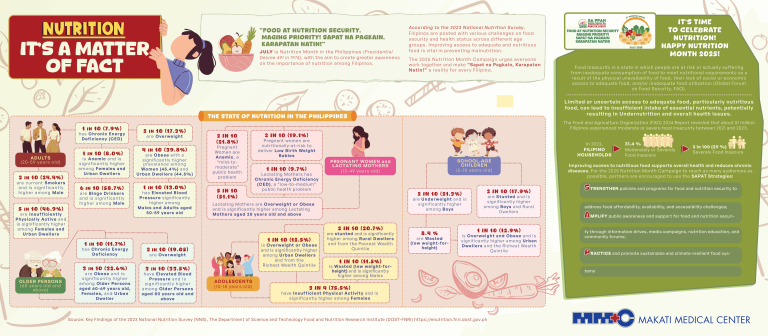The heart is one of the vital organs that is essential for survival. Keeping it healthy is a top priority if you wish to live a long and vibrant life. However, many suffer from heart disease. In fact, it’s the number one cause of death worldwide.
Cardiovascular disease generally refers to a range of conditions that involve the heart. Diseases that fall under this umbrella include those from the blood vessels and parts of the heart, including the valves, muscles, and the rhythm. If you don’t go in for heart disease treatment, it may lead to heart failure or worse, a fatal heart attack.
Despite its reputation, cardiovascular disease can be avoided if you know what to watch out for. It’s always prudent to understand the risk factors and find out if you’re predisposed to any heart condition. If you are, it’s imperative to know the signs and symptoms to treat it early on.
Prevention is always the best course of action, particularly for Filipinos who are constantly exposed to a fatty and salty diet. But for older people who are showing early signs of cardiovascular disease and require cardiac rehabilitation, knowing what’s happening to your body is important. To boost your awareness for cardiovascular disease, go over this educational infographic to help you out:
Congenital Heart Defect (CHD)
CHD is a defect in the structure of the heart or great vessel that’s already present at birth. The signs and symptoms vary for each type of defect. They can range from none to life-threatening, but most congenital heart defects are not related to other diseases. Heart failure is a complication of CHD and must be avoided at all costs.
CHD, whose cause is generally unknown, may also be due to infections during pregnancy, intake of certain medications, poor nutrition, obesity in the mother, and having closely related parents.
The child may also have an increased risk of CHD if he has parents with the same condition. Additionally, genetic conditions such as Down Syndrome, Marfan Syndrome, and Turner Syndrome are associated with CHD.
This hear defect is partly preventable through measles vaccination, consumption of salt with iodine, and food products with folic acid. While some defects do not need treatment, patients can opt to undergo catheter-based procedures at a cardiac cath lab or heart surgery. There are situations where a series of operations may be needed, or a transplant will be required. With the right treatment, prognoses are generally good even if the patient has complicated problems.
Heart Infections
Heart infections are classified into three types:
- Pericarditis is the swelling of the pericardium (the membrane enclosing the heart), which can be caused by a viral infection after a heart attack or heart surgery. It can also develop from autoimmune disorders like rheumatoid arthritis and other conditions such as trauma to the heart or chest, renal failure, AIDS, and certain medications.
- Endocarditis is an infection of the heart’s valves or inner lining, which occurs when bacteria travel through your bloodstream and reach the heart and attach to damaged tissues.
- Myocarditis is a rare disease characterized by inflammation and damage in the heart muscle caused by a viral infection or autoimmune response. The condition is so unusual that research is currently being done on its causes.
Heart infections are generally treated with antibiotics and other medications specific to addressing heart failure. Steroids are also used, so are other drugs that reduce inflammation in the body. Occasionally, surgery is needed.
Rheumatic Heart Disease
You should never take a strep throat infection lightly since it can lead to rheumatic fever, if not properly treated. This can worsen and involve the heart in about half of the cases, leading to rheumatic heart disease. While rheumatic fever affects people of all ages, it’s most common in children ages five to 15.
Rheumatic heart disease, makes the heart work harder in pumping blood due to damage in the heart valves, can lead to congestive heart failure.
Prevention is the best treatment for rheumatic heart disease. Antibiotics, which are given to children with rheumatic fever, generally treat strep throat and stop acute rheumatic fever from damaging the heart. And if damage has occurred, surgical repair or valve replacement may be considered.
Atherosclerosis
Initially, there are no symptoms. But in severe cases, arterial blockage eventually leads to coronary artery disease, stroke, peripheral artery disease, or renal issues depending on which artery is affected. Generally, symptoms do not manifest themselves until middle age.
While the exact cause is unknown, the risk factors include high cholesterol levels, high blood pressure, diabetes, obesity, smoking, family history, and an unhealthy diet. Diagnosis is made after a series of tests that include an electrocardiogram and stress test, among others.
Treatment includes a lifestyle change that focuses on a healthy diet, weight management, and physical activity. Medication involves the prevention of plaque buildup or blood clots. Others help lower cholesterol and blood pressure. In extreme cases, surgical procedures such as angioplasty or coronary bypass grafting are done.
Cardiomyopathy
With cardiomyopathy, there may be a few symptoms or none at all. But as it worsens, shortness of breath, fatigue, and swelling of the legs may occur due to the onset of heart failure. Those affected are exposed to increased risk of cardiac arrest.
The heart muscles or ventricles may enlarge, thicken, or stiffen depending on the specific condition. In most cases, the cause isn’t known, but some may be inherited, result from alcohol abuse, coronary artery disease, drug use—specifically cocaine—and viral infections.
Treatment may include lifestyle change, medications, or surgery, depending on the specific type of cardiomyopathy and the severity of its symptoms.
Arrhythmia
Many types of arrhythmia are asymptomatic. But if it does manifest, this may include palpitations or feeling a pause in between heartbeats. In more severe cases, you may experience lightheadedness, shortness of breath, chest pain, and loss of consciousness.
While most types are not life-threatening, some may result to complications such as stroke or heart failure, with others resulting in sudden death.
Most arrhythmias can be effectively treated through medications, procedures such as the insertion of a pacemaker, and surgery.
Heart Failure
One of the common causes of heart failure is coronary artery disease that may include a previous heart attack, atrial fibrillation, high blood pressure, valvular heart disease, alcohol abuse, infection, and cardiomyopathy brought about by an unknown cause. All these may change either the structure or the functioning of the heart that will result to heart failure.
People with chronic stable mild heart failure generally involves lifestyle changes such as quitting smoking, physical exercise, dietary modifications, and medications. Implants may also be used, such as a pacemaker or an implantable defibrillator. In severe cases, a transplant may be needed if all other measures fail.
Mitral Regurgitation
When the heart doesn’t function as it’s supposed to, problems may arise. In the case of mitral valve regurgitation or mitral insufficiency, the valve does not close properly when the heart pumps out blood, causing blood to leak backward from the left ventricle, through the mitral valve, and into the left atrium after contraction of the left ventricle.
The most common cause of MR is mitral valve prolapse. Symptoms include acute decompensated congestive heart failure, which manifests through shortness of breath when lying flat and at night, and pulmonary edema. Cardiogenic shock or shortness of breath when at rest may also occur. Cardiovascular collapse with shock may be seen in individuals with acute mitral regurgitation due to the rapture of the papillary muscle and the heartstrings, or infective endocarditis of the mitral valve.
Treatment depends on the severity of the disease and generally involves non-curative medical therapy. In worse cases, surgery is done to repair raptured parts of the heart.
Pulmonary Stenosis
Also known as pulmonic stenosis, the dynamic or fixed obstruction of blood flow from the right ventricle to the pulmonary artery is generally first diagnosed during childhood. It’s usually caused by isolated valvular obstruction and may occur in relation to other congenital defects as part of a more complex syndrome.
The best course of action for treatment is balloon aortic valvotomy, which involves the widening of a stenotic aortic valve by inserting a balloon catheter inside the valve. The balloon is inflated to increase the size of the valve’s opening to increase blood flow.
Myocardial Infarction
The significant risk factors for heart attack are old age, smoking, high blood pressure, diabetes, and high cholesterol and high-density lipoprotein (HDL) levels. Many other risk factors are shared with coronary artery disease, which is the leading cause of myocardial infarction. This includes family history, obesity, and alcohol use.
If the heart attack lasts long enough, blood flow to the heart is impaired, leading to tissue death. Scarring may happen, which weakens affected areas. Prevention is always the best course of action, and this can be done through a lifestyle turnaround. Diet, physical activity, and preventive medication.
Conclusion
Cardiovascular disease should be taken seriously, so you should take the necessary steps to avoid it or treat it as soon as possible. You’ll have to be vigilant and go in for regular checkups, cardiac care unit, or cardiac rehabilitation, more so if you’re getting older or you’re starting to feel the signs and symptoms of heart disease.
As with any kind of disease, prevention will always be better than cure. And with matters of the heart, sticking to a healthy diet, regular exercise, and getting the right amount of rest will always be your best course of action in maintaining a healthy heart to last you for many years.

